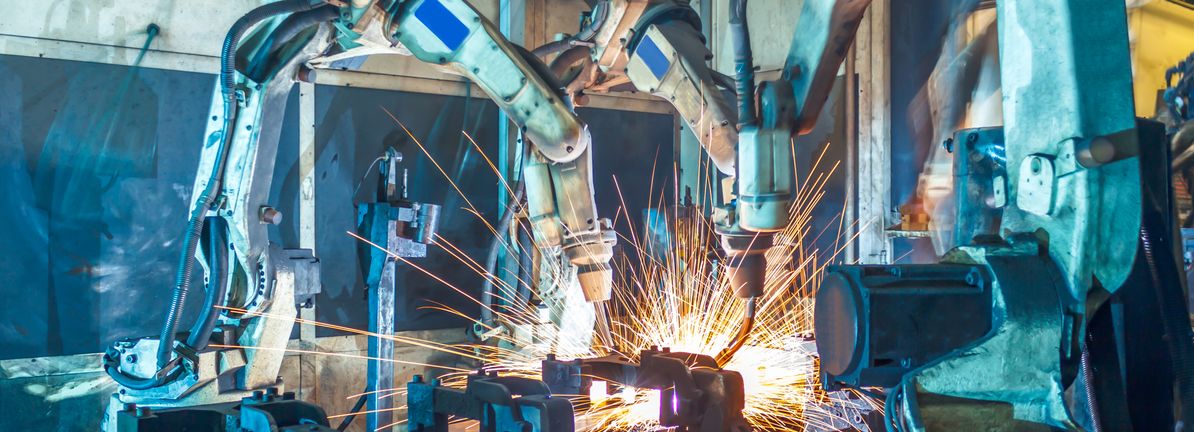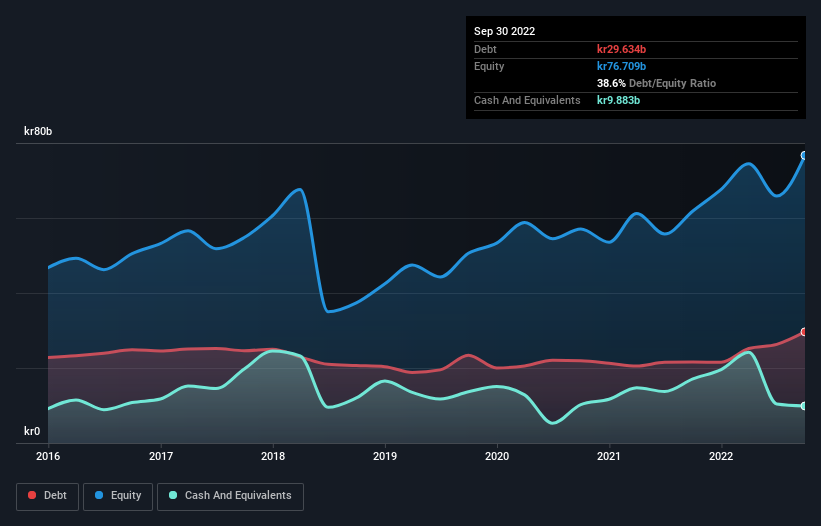
Warren Buffett famously said, ‘Volatility is far from synonymous with risk.’ So it seems the smart money knows that debt – which is usually involved in bankruptcies – is a very important factor, when you assess how risky a company is. As with many other companies Atlas Copco AB (STO:ATCO A) makes use of debt. But should shareholders be worried about its use of debt?
Why Does Debt Bring Risk?
Debt assists a business until the business has trouble paying it off, either with new capital or with free cash flow. If things get really bad, the lenders can take control of the business. However, a more common (but still painful) scenario is that it has to raise new equity capital at a low price, thus permanently diluting shareholders. Of course, plenty of companies use debt to fund growth, without any negative consequences. The first thing to do when considering how much debt a business uses is to look at its cash and debt together.
Our analysis indicates that ATCO A is potentially overvalued!
What Is Atlas Copco’s Debt?
The image below, which you can click on for greater detail, shows that at September 2022 Atlas Copco had debt of kr29.6b, up from kr21.6b in one year. However, it does have kr9.88b in cash offsetting this, leading to net debt of about kr19.8b.

How Strong Is Atlas Copco’s Balance Sheet?
The latest balance sheet data shows that Atlas Copco had liabilities of kr63.7b due within a year, and liabilities of kr29.7b falling due after that. Offsetting these obligations, it had cash of kr9.88b as well as receivables valued at kr40.6b due within 12 months. So its liabilities outweigh the sum of its cash and (near-term) receivables by kr42.9b.
Of course, Atlas Copco has a titanic market capitalization of kr610.3b, so these liabilities are probably manageable. However, we do think it is worth keeping an eye on its balance sheet strength, as it may change over time.
We use two main ratios to inform us about debt levels relative to earnings. The first is net debt divided by earnings before interest, tax, depreciation, and amortization (EBITDA), while the second is how many times its earnings before interest and tax (EBIT) covers its interest expense (or its interest cover, for short). This way, we consider both the absolute quantum of the debt, as well as the interest rates paid on it.
Atlas Copco has a low net debt to EBITDA ratio of only 0.61. And its EBIT covers its interest expense a whopping 914 times over. So you could argue it is no more threatened by its debt than an elephant is by a mouse. Also positive, Atlas Copco grew its EBIT by 21% in the last year, and that should make it easier to pay down debt, going forward. The balance sheet is clearly the area to focus on when you are analysing debt. But ultimately the future profitability of the business will decide if Atlas Copco can strengthen its balance sheet over time. So if you’re focused on the future you can check out this free report showing analyst profit forecasts.
Finally, a business needs free cash flow to pay off debt; accounting profits just don’t cut it. So we clearly need to look at whether that EBIT is leading to corresponding free cash flow. Over the most recent three years, Atlas Copco recorded free cash flow worth 77% of its EBIT, which is around normal, given free cash flow excludes interest and tax. This free cash flow puts the company in a good position to pay down debt, when appropriate.
Our View
Atlas Copco’s interest cover suggests it can handle its debt as easily as Cristiano Ronaldo could score a goal against an under 14’s goalkeeper. And the good news does not stop there, as its conversion of EBIT to free cash flow also supports that impression! Overall, we don’t think Atlas Copco is taking any bad risks, as its debt load seems modest. So we’re not worried about the use of a little leverage on the balance sheet. Over time, share prices tend to follow earnings per share, so if you’re interested in Atlas Copco, you may well want to click here to check an interactive graph of its earnings per share history.
At the end of the day, it’s often better to focus on companies that are free from net debt. You can access our special list of such companies (all with a track record of profit growth). It’s free.
Valuation is complex, but we’re helping make it simple.
Find out whether Atlas Copco is potentially over or undervalued by checking out our comprehensive analysis, which includes fair value estimates, risks and warnings, dividends, insider transactions and financial health.
Have feedback on this article? Concerned about the content? Get in touch with us directly. Alternatively, email editorial-team (at) simplywallst.com.
This article by Simply Wall St is general in nature. We provide commentary based on historical data and analyst forecasts only using an unbiased methodology and our articles are not intended to be financial advice. It does not constitute a recommendation to buy or sell any stock, and does not take account of your objectives, or your financial situation. We aim to bring you long-term focused analysis driven by fundamental data. Note that our analysis may not factor in the latest price-sensitive company announcements or qualitative material. Simply Wall St has no position in any stocks mentioned.
Source link
